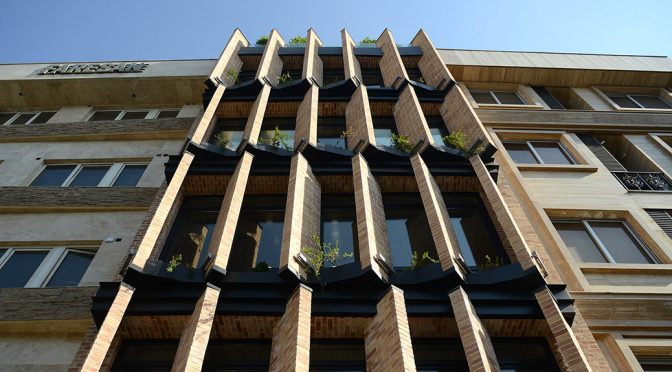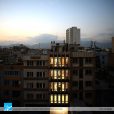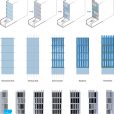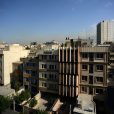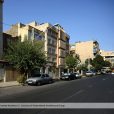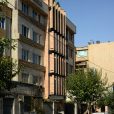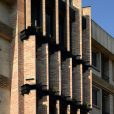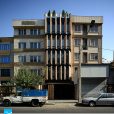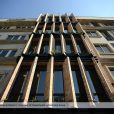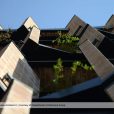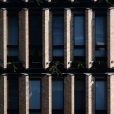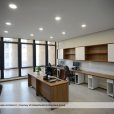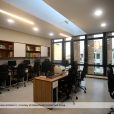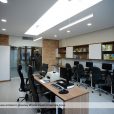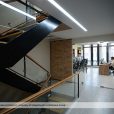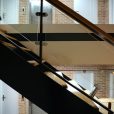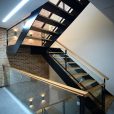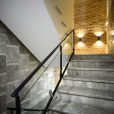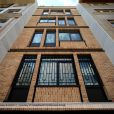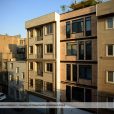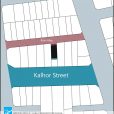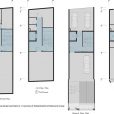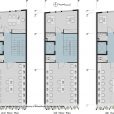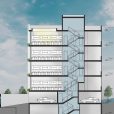دفتر مرکزی انتشارات سرمشق
دفتر معماری کهنخشت (محمدعلی نقیخانی)
موقعیت: تهران، ایران
تاریخ: ۱۳۹۶
مساحت: ۶۸۲ مترمربع
وضعیت: ساختهشده
کارفرما: انتشارات سرمشق (مهدی میرزاداعی، حسین مسلمی)
همکاران طراحی: محسن سمیعی، سیدروحالله طبایی، محسن حسینی، محسن تقیزاده
مدلسازی و گرافیک: حمیدرضا مجنونی
سازه: عبدالله شمس
تاسیسات: حسین نژادمهدی
اجرا: مرتضی نایبزمان، علی قانعفرد
عکس: علی دقیق
پروژه زمانی به ما ارجاع داده شد که نقشههای معماری تهیه شده بود. پس از مذاکره با کارفرما و بنا به خواستههای وی، نقشهها تغییر کرد و پلانی با خلوص فضایی بهتر و حداکثر نورگیری و کاربری طراحی شد، به طوری که فضاها یک کل واحد هستند و ارتباط افقی پلان طبقات قطع نمیشود، و پله و آسانسور صرفا نقش دسترسی بین بخشهای مختلف را دارند.
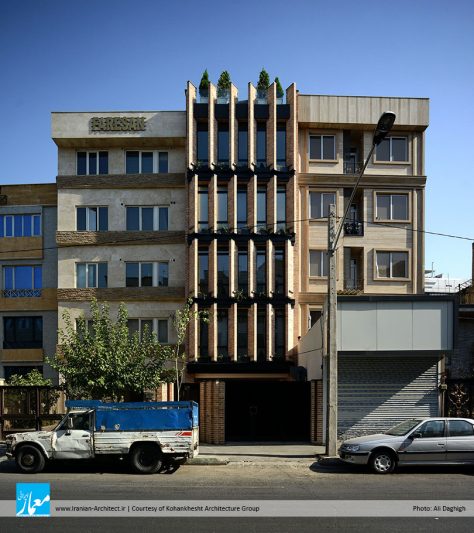
با توجه به اینکه زمین پروژه در یک بافت مختلط مسکونی و اداری قرار گرفته است، تلاش شد تا در طراحی جدارههای خارجی (جنوبی و شمالی)، نمای جنوبی در راستای خیابان اصلی، بیانگر قالب اداری بنا و جداره شمالی که در کوچه قرار دارد، در ارتباط با بناهای مسکونی باشد.
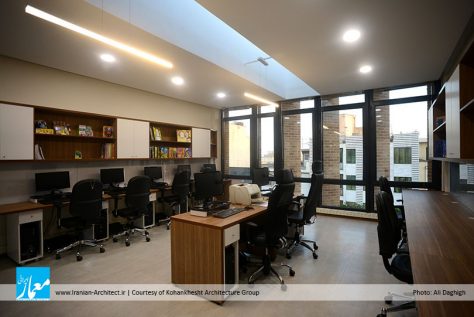
در جداره جنوبی، تیغههایی آجری با زوایای متفاوت پیشبینی شد تا ضمن اینکه نور را در فضای یکدست داخلی کنترل میکنند، دید به نماهای آشفته و ناهمگون بیرونی را برای کاربران تعدیل کنند. همچنین، این تیغههای آجری، به صورت شاعرانهای، در درون و بیرون، در طول روز، با نور و سایه بازی میکنند و در ترکیب با گیاهان، جذابیت ویژهای برای کاربران داخلی و عابران شهری ایجاد میکنند. استفاده از آجر به عنوان ماده اصلی نیز، اشاره به بناهای قدیمی و هویت بافت منطقه دارد.
Sarmashgh Headquarters Office
Kohankhesht Architecture Group (Mohammad Ali Naghikhani)
Location: Tehran, Iran
Date: 2017
Area: 682 sqm
Status: Completed
Client: Sarmashgh Publishing Co. (Mahdi Mirzadaei, Hossein Moslemi)
Design Team: Mohsen Samiei, Rohollah Tabaei, Mohsen Hosseini, Mohsen Taghizadeh
3D Modeling & Graphic: Hamidreza Majnooni
Structure: Abdollah Shams
Mechanical Consultant: Hossein Nejadmahdi
Construction: Morteza Nayebzaman, Ali Ghanefard
Photo: Ali Daghigh
The project was referred to our office, when the architectural plans had been designed. Through negotiation with the client and based on his requirements and expectations, the plans were modified. The improved plans enjoyed the benefits of more purity of space, maximum exposure to sunlight and optimum usage of the occupancy; so that, the spaces form is a single whole and the horizontal circulation and connection of the floors are not interrupted, while the stairway and elevator are merely used for access to various spaces.
As the project is situated in a multiple context of the residential and administrative occupancy, in designing the external façade (southern and northern), we attempted to design the southern view, situated along with the main street, to express and expose the administrative occupancy of the building, whereas the northern view, located in the alley, is connected with the adjacent residential buildings.
In the southern façade, the brick walls were designed with various angles, so as to not only do they control the light in the uniform internal space, but also they balance the inconsistent and heterogeneous outside views for users. The brick walls, inside and outside the building, create light and shade in a pleasant way, during the daytime and when they are blended with the plants, they create particular attraction for inside users and outer pedestrians. The employment of brick, as the main material, points to the traditional monuments and the identity of the district context.

